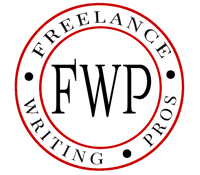NEWSLETTER 11
New on the Blog:
Here are the latest posts on the Freelance Writing Pros blog since the last newsletter:
- 5 Signs It’s Time to Overhaul Your Freelance Writer Website
- Why It Doesn’t Matter If a Marketing Tactic “Works”
- How to Create a Custom High-Converting Contact Form With Conditional Logic
- Turn Your Freelance Writer Website Into a Go-To Resource
- Year-End Marketing Ideas for Freelance Writers
- Freelance Writer Platforms 101
Newsletter Schedule Update
A quick update on the future schedule of this newsletter — from now through January 6th, I’ll send newsletters on a bi-weekly schedule.
My time has been much more limited lately which has made it tough to stay on top of some of my own projects while clients start their usual year-end rush and I’m working on my own year-end planning and crunch time before my usual December vacation time.
So newsletter schedules are being adjusted temporarily until I return from my break on January 6th.
Free Email Course Update
You might remember I mentioned I’d release a free 7-Day Marketing Refresh email course.
While I’d hoped to release it in October, some delivery issues turned up with a couple emails in testing. While I think they’re resolved now, I’m waiting on a final test sequence to go through before releasing it.
My expectation as of now is that the email course will be released with our next newsletter two weeks from now.
Bullet Journals as Writers’ Planners
If you aren’t familiar with bullet journals, I want to introduce you to them today because they’re an outstanding planning tool. And with the end of the year quickly approaching, planning is top-of-mind for many.
For a basic look at what they are, I recommend starting with my 2018 post “How I’m Using Journaling to Change My Writing Career (and My Life)” over at All Freelance Writing.
I love bullet journals so much that I use three:
- My general bullet journal
- My blog / web publishing journal
- My publishing journal
I track and plan pretty much everything in them: health issues, fitness routines, appointments and schedules, holiday planning, work schedules, deadlines, blog post plans, and even outlines of novels and nonfiction manuscripts.
But I use them most heavily around this time of year when it’s time for bigger planning. And I highly recommend them.
Why?
- Actually writing things down can help you remember them better (or trigger better accountability) compared to the same old digital routine we’re used to.
- They’re completely adaptable — you can literally use them however you want, and you can keep it as basic or as creative as you prefer.
- Everything is indexed.
- It’s easy to thread your spreads — such as new yearly goals to quarterly review and goal update pages and then to year-end reviews. This makes them great tools for long-term planning and tracking.
What Can You Plan in a Bullet Journal?
Anything. Everything.
Here are some examples of spreads I use for planning my freelance writing, blogging, and publishing work:
- Year-end reviews
- Yearly goals
- Quarterly reviews
- Quarterly goals
- 90-day goals and challenges (income, traffic, etc.)
- 30-day challenges
- Monthly goals (on broader monthly spreads)
- Word count goals and tracking (like this month for NaNoWriMo)
- A business bucket list
- Story ideas
- Pitch tracking (for short fiction and poetry, but this would also work if you pitch freelance clients)
- Work-related “house cleaning” (file organization, server maintenance, etc.)
- Reading lists
- Coursework
- Outlining e-books and e-courses I’m working on
- Experiment planning and tracking
- Monthly learning / new skills / professional development goals
- Edit tracking for manuscripts
- Lists of high-energy and low-energy work-related tasks that need to be done regularly (so if it’s a great day or a rough day, I can put extra time to good use)
- A list of 15-min regular business tasks I can tackle whenever I have free time or just need a change of pace for a bit
- General manuscript trackers
- Monthly website statistic tracking
- Income charting
These are just some of the spreads in my current bullet journal. If you’re looking for a new way to tackle your year-end planning, I highly recommend looking into them and browsing sample spreads online.
Note: You don’t have to use bullet journals exclusively. If you like digital tools, they can be combined nicely. Personally I do most planning in my bullet journals, then I move related tasks and deadlines over to Todoist.
In coming weeks, as I set up my 2020 bullet journals, I’ll share some of my own spreads with you on the blog.
If you’re already using bullet journals in your freelance writing business and you’d like to share one of your own favorite spreads on the Freelance Writing Pros blog when I put that post up, or simply recommend some spread ideas that have worked well for you, I’d love to hear from you.
Jenn
